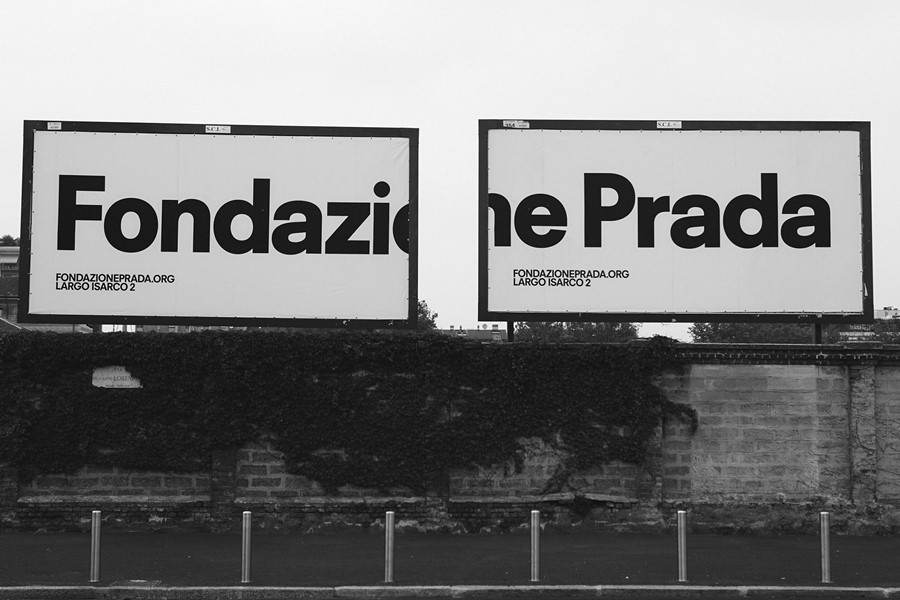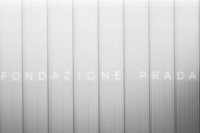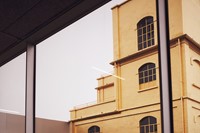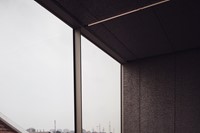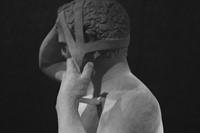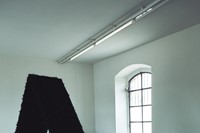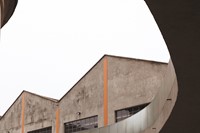Miuccia's new art space in Milan provides a wealth of riches, from Wes Anderson's bar to Roman Polanski's favourite films
At the Fondazione Prada’s much-anticipated new home in Milan, three words especially come to mind: subversion, subtlety and detail. Though the Fondazione unfolds across 19,000 square meters and several buildings, there is a distinct lack of bombast. Developed by OMA, and led by long-time Prada architect Rem Koolhaas, the new venue, a transformed distillery in the south of Milan, is aptly, gloriously, yet un-ostentatiously Prada.
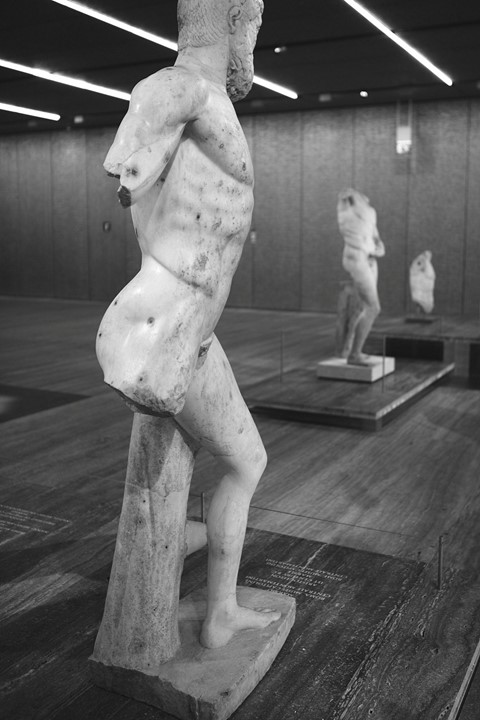
This week, as poplar fluff drifted around the complex of buildings, guests explored the vast site with the help of discreet and helpful staff wearing immaculate grey and black uniforms reminiscent of auto racing team attire (Mrs. Prada’s son is a rally car driver). There are beautiful features: a gilded tower, whose surface will wash away in time; mirrored steel on certain external walls; plush seats in pistachio green in the new cinema and in the exhibition spaces, an echo of those found in the brand’s stores; a bar designed by director Wes Anderson… and that’s before even mentioning the works of contemporary art from the Collezione Prada which are on display across several exhibitions taking place concurrently in different buildings. Yet in typically subversive fashion, the opening show in the glass-fronted Podium building focuses not on contemporary art but on classical statuary and the idea of the copy in classical art (a second, complementary part of the exhibition is on display at the Fondazione’s Venice outpost). Here, AnOther selects five highlights of the Fondazione’s new home.
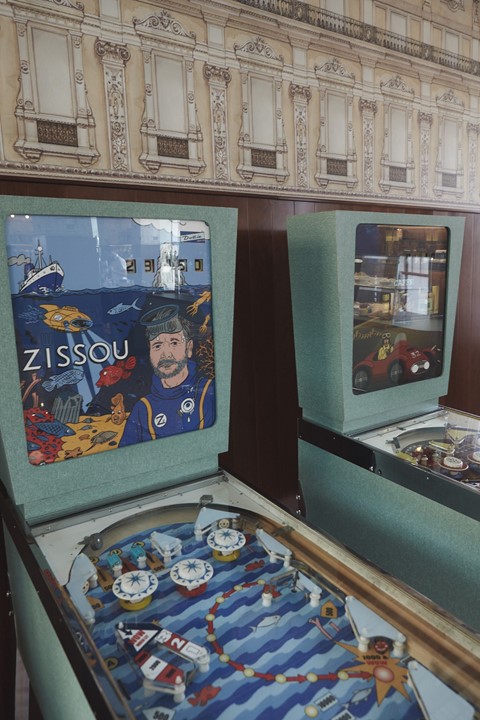
1. Bar Luce
It feels like walking into a living, breathing location from a Wes Anderson film, yet crossed with Cinecittà. Inspired by traditional Milanese cafes, as well as Italian neorealist films Miracle in Milan and Rocco and His Brothers, Anderson’s pastel-hued Bar Luce is destined to become one of the most visited spaces in Milan. The aesthetic is undeniably Anderson – pink and green formica furniture, veneered wood, and plenty of vintage touches – with elements harking back to the charming cafe in his short film Castello Cavalcanti, presented in 2013 by Prada. Steve Zissou and Castello Cavalcanti-themed pin-ball machines sit next to a polished jukebox piping a selection of 50s and 60s music around the space, so it sounds like a Wes Anderson film as much as it looks like one. Anderson has said it would make a good place to write a movie: we couldn’t agree more. Order an Aperol Spritz and soak up the atmosphere.
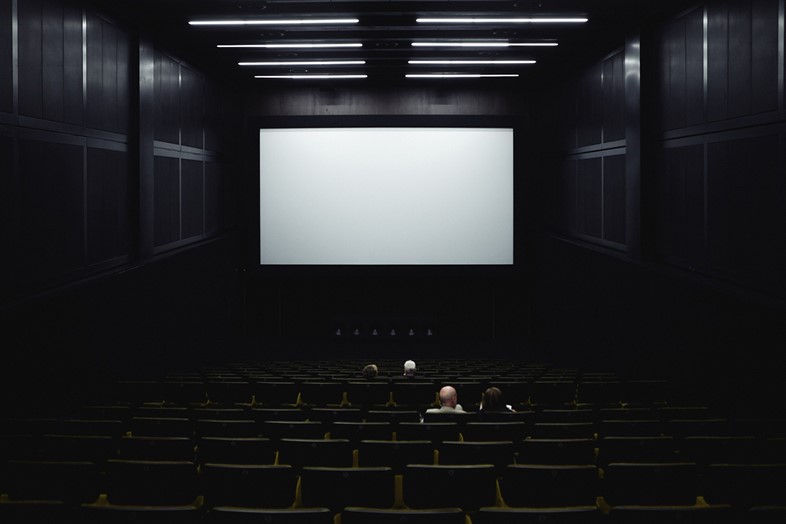
2. Roman Polanski: My Inspirations
Specially commissioned for the opening and screened in the new cinema, the Oscar-winning director looks back on his earliest film inspirations in a new documentary. The selection of films includes those he saw as a child in Krakow – Great Expectations, Hamlet, Odd Man Out – as well as later influences, such as Fellini’s 8 1/2, the definitive director’s movie. Providing an intimate insight into his filmmaking process, Polanski details the conscious and subconscious nods to early cinematic loves in his own films, some of which, along with his shortlist of admired classics, will be screened here every Friday and Saturday from May 22 to July 25.
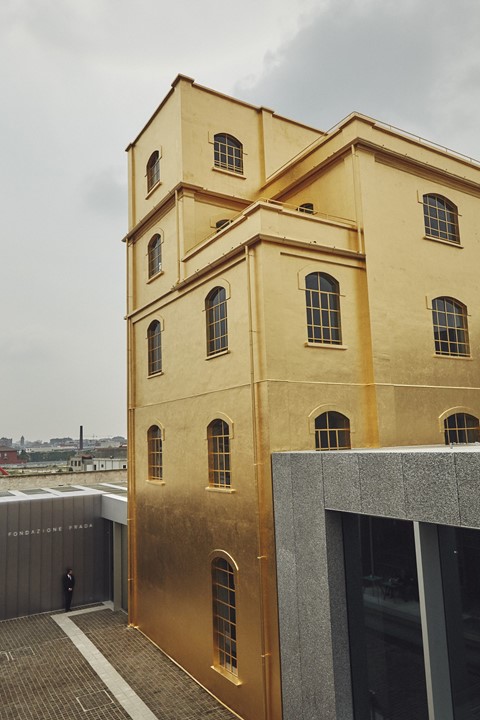
3. The Haunted House
This building, so-called because of its particular, supernatural energy, is the perfect setting for a permanent installation by American artist Robert Gober, whose uncanny and faintly disturbing works punctuate the different floors. A baby’s cot contains a slab of what appears to be wax and some apples; beneath a drain in the floor lies a glowing heart. Connections are drawn between his work and that of the late Louise Bourgeois, represented here with two seminal works from the Collezione Prada (including the eerie circular environment Cell (Clothes) from 1996), both in terms of their architectural structures and gothic overtones.
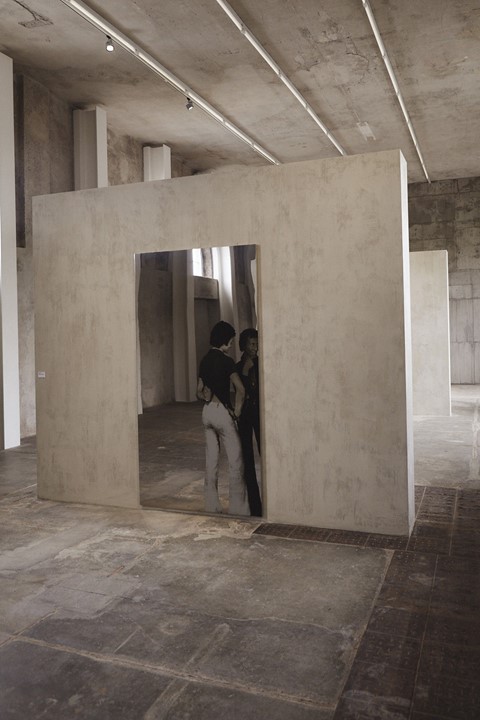
4. An Introduction
Miuccia Prada and husband Patrizio Bertelli created the Fondazione in 1993, led by a joint passion for art. This exhibition in the long South Gallery shows the breadth and rigor of their collecting impulse, from Renaissance wall-hangings to stop-motion video pieces housed in a potato-shaped cave by the young Swedish artist Nathalie Djurberg. A spectacular “quadreria” in one room features works hung floor to ceiling across three walls by a who’s who of contemporary artists across disciplines and epochs, among them Luc Tuymans, Gerhard Richter, Lucio Fontana and Alighiero Boetti, making for a fascinating wallpaper of colours, textures and ideas.
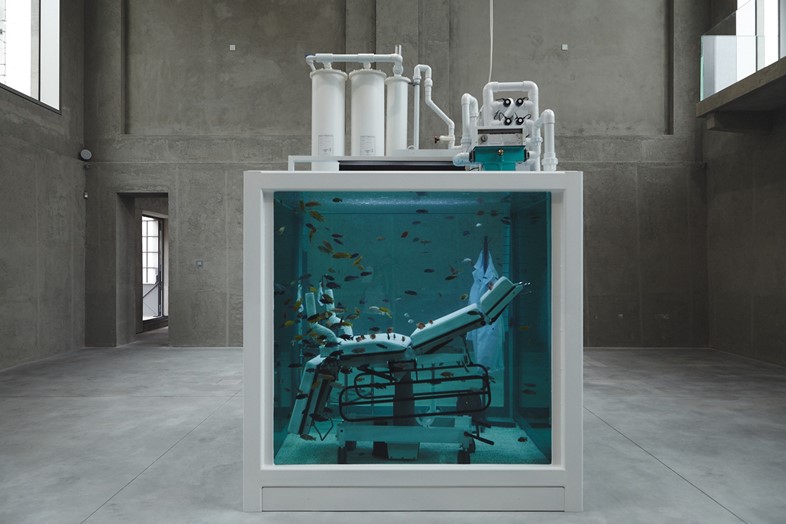
5. Damien Hirst, Lost Love
Featured in the middle of three cavernous rooms in the Cisterna building is Lost Love, a breathtaking work by Damien Hirst: a cube containing a submerged gynecologist’s office, complete with ominous white chair and trolley of instruments, and filled with tropical fish that variously inhabit the folds of a coat, flit calmly past the array of frightening implements and even nestle in a pair of shoes. By turns surreal, disturbing, yet undeniably alluring, the work is a dramatic and colourful counterpoint to quieter pieces by Eva Hesse and Pino Pascali in the adjoining rooms, all however united by their geometric qualities. The works are displayed as part of a rotating project called Trittico, which finds relations between three ostensibly very different works from the Collezione Prada.
Fondazione Prada, Largo Isarco 2, Milan, is open from May 9.
Follow AnOther Loves Wes on pinterest.
